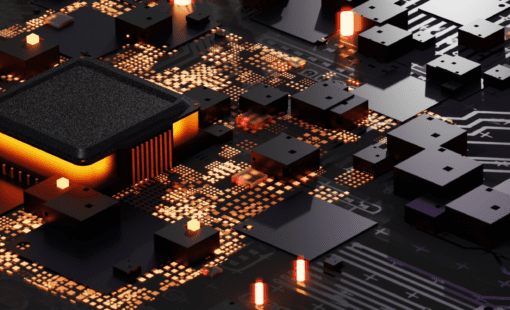Every day, more and more of our lives become connected with IoT technology. With billions of smart products already out there, the demand for this technology shows no signs of slowing down anytime soon. Even with increasing demand, executives are asking engineers to develop products on shorter and shorter design cycles. One area for improvement is a collaboration between electrical and mechanical engineers during the board development process.
Traditionally, board design hasn’t required a whole lot of collaboration. An individual sat down with an ECAD application and designed a board. Today, however, challenging system constraints require a lot more collaboration between the mechanical and electrical engineer.
In this post, we’ll look at how ECAD-MCAD collaboration can be improved.
Mechanical fit of board systems
A board system must meet physical design requirements. This is the job of the mechanical engineer, who creates an outline of the board using an MCAD tool based on the enclosure requirements. From there, the electrical engineer opens up the same outline in an ECAD application. Based on a board schematic, which details the logical design, they start placing components on the board according to their respective constraints. The finished design is then shared with the mechanical engineers, who construct a 3D model.
It’s rare for a design to make it through the initial pass without requiring changes. Usually, some alterations have to be made, resulting in a re-spin. Electronic components may need to be moved around on the board, which would mean changing the overall outline to meet the logical requirements. There are often several passes between both the mechanical and the electrical engineers before the product is completed.
Functional performance of board systems
The structural performance for a board system also needs to be evaluated. When exposed to vibration loads, the pins connecting electrical components in the circuit board can fail, and that can lead to an overall system failure. Addressing this problem efficiently often requires a 3D model, and the process is similar to testing the fit of the board system. Again, requiring more passes between the mechanical and electrical engineer.
File-based exports and imports
Collaboration between ECAD and MCAD still relies on a traditional technology enabler. Basically, some sort of file-based export and import of design information. The board outline is exported as a 2D file from the MCAD application and then altered in the ECAD application. Once it is imported back into the MCAD application, the information is interpreted and placed in the 3D assembly model.
This approach isn’t ideal for a number of reasons. Every time a change is made to the design, the two sides must exchange files, which is redundant and labor-intensive. Each engineer must notify the other of any changes that have been made. There’s a lot of room for human error here, as some information may unintentionally be left out. The same goes for structural simulations: changes may be made in one place, but not reflected in the 3D assembly model.
Difficult exchanges lead to procrastination
Since engineers are working under such tight schedules, it can be difficult to keep track of every single little change along the way. Small changes are often lumped together at certain checkpoints and may not be accounted for until the process is much further along. Sure, it makes things easier in the moment, but it can cause a lot of problems later on. Fewer checks lead to more rounds of prototyping, which means lost time and increased scrap. The more problems you encounter, the more money your organization inevitably winds up spending.
This current approach is much too error-prone and does just the opposite of compressing the development cycle.
Tighter ECAD-MCAD connections
To reduce the back-and-forth file exchanges and the unnecessary rounds of prototyping, there needs to be more collaboration earlier on in the board’s development. Integrated MCAD and ECAD applications can connect and synchronize designs, allowing a seamless exchange of information. Any changes made on the mechanical side can be immediately reflected on the electrical side, and vice versa, eliminating the need for importing and exporting.
In structural simulations, the synchronization between MCAD and ECAD applications provides a continuously up-to-date 3D assembly model visible to all users. This allows for more of a simulation-driven design approach, where engineers can first make changes to the model and then look to their results from a simulation analysis to make decisions. Earlier structural simulations lead to better products and fewer prototypes, which aligns with the efforts of engineering leadership to shorten the product development cycle.
Progressive solutions
Zuken offers innovative solutions that optimize and advance positive collaboration between electrical and mechanical design. Utilizing these solutions enables the intelligent exchange of electrical and mechanical data by allowing for early detection of electro-mechanical violations and providing an accurate 3D assembly model. Combined with a collaborative process, engineers can reduce design iterations and costly errors.






